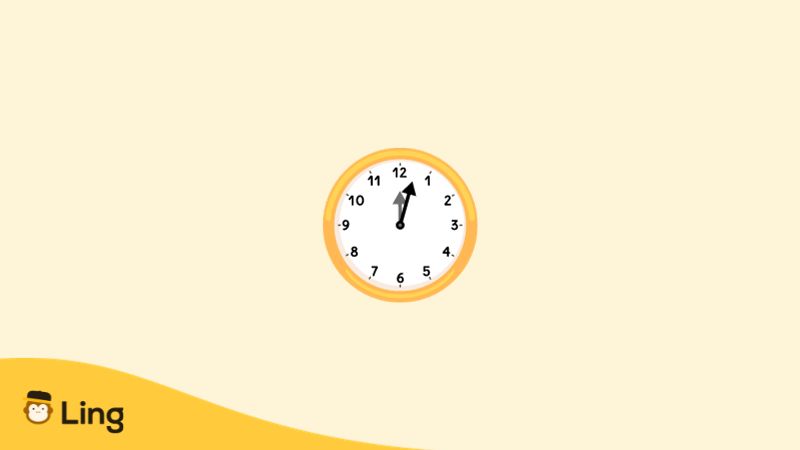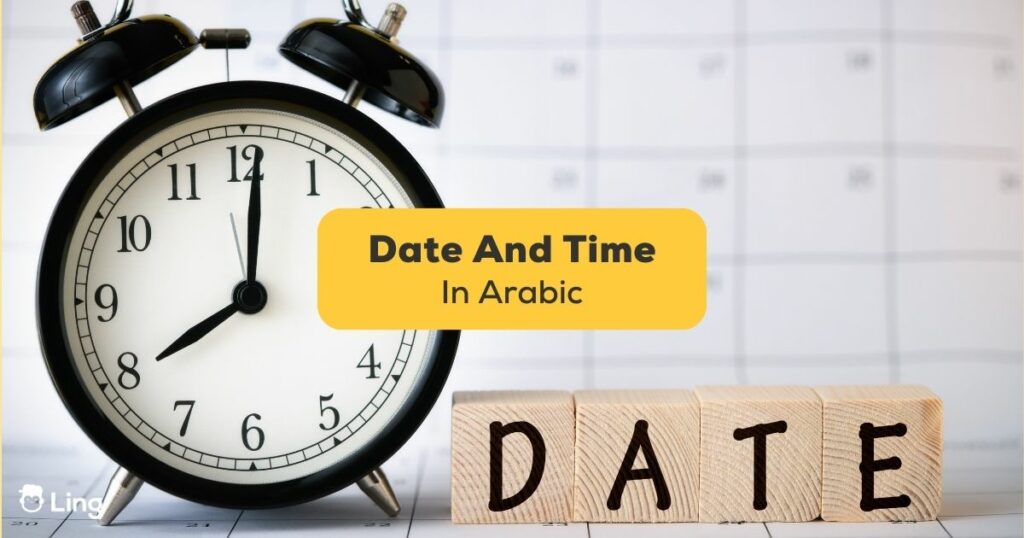As a native English speaker, have you ever read an Arabic text and just automatically read the date and time in Arabic as if they were written in English because you didn’t know how to really say them?
Well, I have. But we need to stop doing that! In this article, you will learn how to read an Arabic date and time.
The Basics Of Arabic Dates
Let’s start with how to write dates in Arabic.
As in other parts of the world, dates in Arabic format look like this: “day-month-year.” November 14, 2023, would be 14/11/2023. In Eastern Arabic numerals, that particular date in Arabic would look like this: ١٤/١١/٢٠٢٣. Keep in mind, you should write dates from left to right in Eastern Arabic.
Gregorian And Hijri Calendars
In Arab countries, two calendars are used in daily life—the widely used Gregorian calendar and the Hijri, an Islamic calendar. While the Gregorian calendar is the one you’re accustomed to, the Hijri calendar is lunar-based and has religious connotations for the Arab world. This lunar calendar plays an important role in determining special dates and events in Islam, such as Ramadan and Eid.

Date And Time In Arabic
Let’s get to learning essential vocabulary related to date and time in Arabic, starting from days of the week.
Days Of The Week In Arabic
In the table below, you’ll find the vocabulary for the days of the week in Arabic, with their prepositions as well, so you know how to use them in a sentence correctly. I know they sound very different compared to the European languages, but don’t be scared. I’m sure you’ll learn them in a very short time!
| English | Arabic Script | Pronunciation |
|---|---|---|
| Monday | الإثنين | al-ethnayn |
| Tuesday | الثلاثاء | al-tholatha’ |
| Wednesday | الأربعاء | al-arbe’a’ |
| Thursday | الخميس | al-khamees |
| Friday | الجمعة | al-jom’ah |
| Saturday | السبت | al-sabt |
| Sunday | الأحد | al-ahad |
| Weekend | العطلة الأسبوعية | al-o’tla al esbue’yah |
| On Monday | في يوم الإثنين | fi yaum al-ethnayn |
| On Tuesday | في يوم الثلاثاء | fi yaum al-tholatha’ |
| On Wednesday | في يوم الأربعاء | fi yaum al-arbe’a’ |
| On Thursday | في يوم الخميس | fi yaum al-khamees |
| On Friday | في يوم الجمعة | fi yaum al-jom’ah |
| On Saturday | في يوم السبت | fi yaum al-sabt |
| On Sunday | في يوم الأحد | fi yaum al-ahad |
| At the weekend | في العطلة الأسبوعية | fi al-o’tla al esbue’yah |
Months In Arabic
Months are easier to learn because they sound very similar to their English names.
| English | Arabic Script | Pronunciation |
|---|---|---|
| January | يناير | yanayer |
| February | فبراير | febrayer |
| March | مارس | mares |
| April | أبريل | abreel |
| May | مايو | mayu |
| June | يونيو | yonyu |
| July | يوليو | yolyou |
| August | أغسطس | aghostos |
| September | سبتمبر | septamber |
| October | أكتوبر | octobar |
| November | نوفمبر | novamber |
| December | ديسمبر | desamber |
Seasons In Arabic
And when it comes to vocabulary for seasons, they are even easier than months!
| English | Arabic Script | Pronunciation |
|---|---|---|
| Spring | الربيع | al-rebye’ |
| Summer | الصيف | al-sayf |
| Fall | الخريف | al-khareef |
| Winter | الشتاء | al-sheta’ |

Telling The Time In Arabic
The time of day can be described in general terms or specific times. We’ll start with words that can be used to describe the general time of day.
| English | Arabic Script | Pronunciation |
|---|---|---|
| Morning | الصباح | al-sabah |
| Forenoon | النهار | al-nahar |
| Noon | الظهيرة | al-daheerah |
| Afternoon | بعد الظهيرة | ba’d al-daheerah |
| Evening | المساء | al-masa’ |
| Night | الليل | al-layl |
| Midnight | منتصف الليل | montasaf al-layl |
When you want to know a specific time of day, you can ask as-saa’a kam? (What time is it?). Remember that time expressions use ordinal numbers (first, second, and so on) rather than cardinal numbers (one, two, and so on).
Before telling time, you should learn the numbers; if you haven’t learned them yet, we have another blog article about Arabic numbers!
| English | Arabic Script | Pronunciation |
|---|---|---|
| One o’clock | الساعة الواحدة | as-saa’a al-waaHida |
| Two o’clock | الساعة الثانية | as-saa’a ath-thaaniya |
| Three o’clock | الساعة الثالثة | as-saa’a ath-thaalitha |
| Four o’clock | الساعة الرابعة | as-saa’a ar-raabi’a |
| Five o’clock | الساعة الخامسة | as-saa’a al-khaamisa |
| Six o’clock | الساعة السادسة | as-saa’a as-saadisa |
| Seven o’clock | الساعة السابعة | as-saa’a as-saabi’a |
| Eight o’clock | الساعة الثامنة | as-saa’a ath-thaamina |
| Nine o’clock | الساعة التاسعة | as-saa’a at-taasi’a |
| Ten o’clock | الساعة العاشرة | as-saa’a al-‘aashira |
| Eleven o’clock | الساعة الحادية عشرة | as-saa’a al-Haadiya ‘ashra |
| Twelve o’clock | الساعة الثانية عشرة | as-saa’a ath-thaaniya ‘ashra |
When telling the time, you can use the following terms to break things down.
| English | Arabic Script | Pronunciation |
|---|---|---|
| Hour/Time/Clock/Watch | ساعة | saa’a |
| Minute | دقيقة | daqiiqa |
| Second | ثانية | thaaniya |
| Half | نصف | nuSf |
| Quarter | ربع | rub’ |
| Third (20 minutes) | ثلث | thulth |
To tell a specific time, you should say the hour and then add the minutes, quarters, etc. to the end of the phrase. Let’s look at the following examples:
- Quarter ’til four – الساعة الرابعة إلا ربع (as-saa’a ar-raabi’a illaa rub’)
- 1:30 a.m. – الساعة الواحدة ونصف في الصباح (as-saa’a al-waaHida wa nuSf fii-SabaaH)
- 7:15 p.m. – الساعة السابعة وربع في المساء (as-saa’a as-saabi’a wa rub’ fii-l-masaa’)
Start Learning Arabic With Ling!
If you want to learn Arabic and are looking for the best language-learning app to improve your language skills, Ling is here for you!
The Ling app is a language learning app that offers more than 60 language courses from beginner to advanced level. It helps you practice the Arabic alphabet and learn new vocabulary in context. Last but not least, you can practice your pronunciation skills by talking to a chatbot. Thanks to Ling, you can improve all your Arabic language skills in a single app!
So don’t wait. Download the Ling app from the App Store or Play Store and start learning now!
Also, don’t miss Ling’s Arabic blog! We share articles covering topics related to this language and culture!



































































